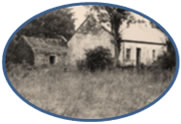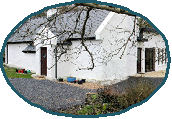
Culmore, Co Mayo

from the pressures of modern life.
 |
MORRISON COTTAGE Culmore, Co Mayo |
 |
| Welcome | The perfect place for time away from the pressures of modern life. |
Architectural Notes |
| Introduction | Important Information | |
| History | Heating & Internet | |
| Wildlife | Comments Welcome! | Places to see |
| Dream Homes Magazine - Article 1 | rcwalter@yahoo.com | Circular Walk from Cottage |
| The Wildlife around Morrison Cottage - well some of it! Please make a note of anything of interest you see in our visitor book |
||||
Mammals
Birds There are many species of birds to be seen around the Culmore, depending on season. The following list is not comprehensive. Please feel free to consult the bird book on the bookshelf for details and identification. |
||||
Blackbird |
Magpie |
|||
Reptiles and Amphibians According to legend St Patrick banished snakes from Ireland. There are Common Lizards in Mayo but they aren’t common and haven’t been seen at Culmore. There are common frogs in the area. Smooth newts are also found in Ireland but it is not known whether there are any in the Culmore area. Irish Wildlife Trust would like sightings of lizards and newts reported to them (http://iwt.ie) Butterflies The following species have been seen at Culmore: |
||||
|
||||
It is not known whether there are any Marsh Fritillary butterflies locally. It is the only one of 12,000 species of insects in Ireland covered by EU Law because it is in danger of becoming extinct in Europe. It favours wet fields so should be in the area. Dublin Naturalists Field Club welcomes sightings of butterflies for their survey. This part of Mayo isn’t very well covered by butterfly reporters. http://www.dnfc.net/ Other Insects and Spiders There are many insects and spiders to find. Some may even be new species. Consult the guide book as a start to identification. The largest insect seen here (excluding Lepidoptera) has been the cockchafer. FLORA
|
||||
Buttercup species |
Hawkweed species |
|||
Plus various species of grasses and rushes. The non-flowering plants are well-represented by a variety of ferns, mosses and lichens. The trees near the cottage have a good encrustation of lichen. |
||||